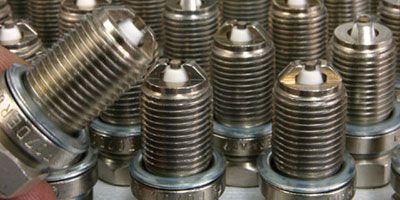
Forget the musclecar era, this is the golden age of horsepower. Never in the history of high performance has it been easier and less expensive to make killer power. Face it, 500 hp is the new 400 hp, and it escalates from there. All this comes down to what the internal combustion engineers call BMEP: brake mean effective pressure. This cylinder pressure is what drives the pistons down. Pressure comes from heat, so that means with all this newfound power, engines are cooking up more heat in those cylinders.
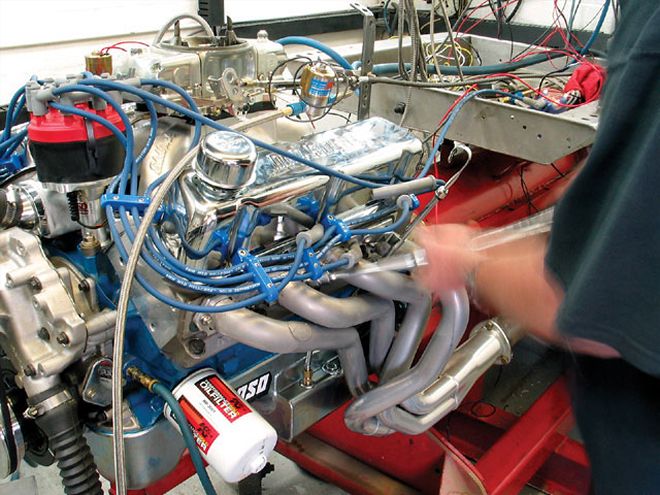 There's more to choosing the optimal spark plugs than choosing ones that just screw into the hole.
There's more to choosing the optimal spark plugs than choosing ones that just screw into the hole.
When building a custom engine combination, it becomes a challenge to choose the right spark plugs, since there are often no factory reference points from which to start. And this is much more than just "if the spark plug fits, wear it." There are questions of heat range, extended nose versus standard plugs, copper versus platinum versus iridium electrode, and the incredibly diverse world of specialty or "designer" spark plugs. We'll shed some light on all these factors, but expect to do some homework to intelligently choose the right plugs for your application.
In Car Craft's own dyno testing, we've recently been victimized by overheated and pre-ignition-plastered spark plugs, and that never used to happen to street-friendly engines. This sparked an investigation into the world of fire-starters, and we learned some tricks you should know before you light a fire under your latest horsepower effort.
Where To Start
It seems every engine requires its own uniquely designed spark plugs, but despite the fact that spark-plug catalogs' pages now number in the hundreds, for the sake of domestic car-crafting needs, we can condense spark-plug construction to four separate areas: hex size, sealing seat, thread size, and thread reach. Older '60s and early '70s engines generally used 131/416-inch hex sizes, but the industry has been gradually making spark plugs smaller to fit increasingly tighter spaces, so the 51/48-inch-hex plug shell is the most common. As long as the other requirements are fulfilled, you can easily exchange 131/416-inch-hex plugs (like for the '60s big-block Chevy) with 51/48-inch-hex versions.
Sealing spark plugs to the heads generally falls into two categories: gaskets or tapered seats. Generally, iron heads use tapered seats to seal in cylinder pressure, while aluminum heads generally use gaskets. But even this isn't set in stone, since the GM Gen III small-blocks with aluminum heads use tapered-seat plugs. Some aftermarket cylinder heads are now machined for either, but gaskets are still a better idea for aluminum heads, since they prevent metal transfer between the soft aluminum and the steel plug shell.
The most popular thread size for domestic plugs is 14 mm, although a few older Ford engines used the larger 18mm size back in the '60s. Thread reach does vary, but the two most common flavors are the short 0.460-inch and the longer 0.750-inch versions. The longer thread reach is generally used most often with aluminum heads, while the shorter versions are used with iron heads.
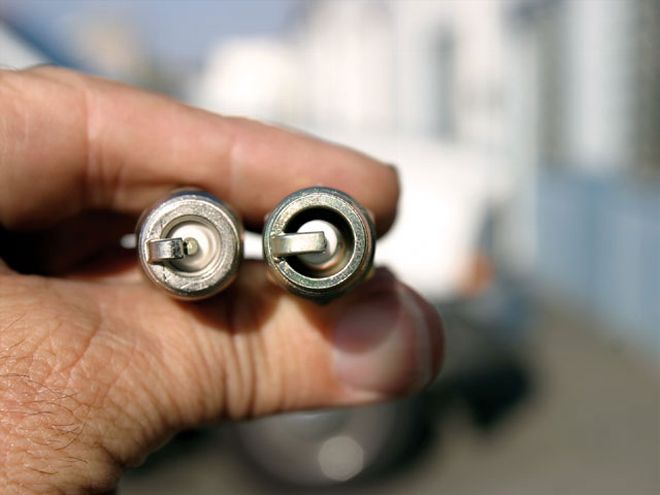 Note the shallow ceramic insulator on the plug on the left. This is a very cold Autolite race plug. The greater length of ceramic with the plug on the right creates a longer heat path, which makes this a much hotter plug.
Note the shallow ceramic insulator on the plug on the left. This is a very cold Autolite race plug. The greater length of ceramic with the plug on the right creates a longer heat path, which makes this a much hotter plug.
The Cold War Heats Up
Big horsepower means more heat, so when it comes to choosing a spark-plug heat range, the best advice is also the simplest-put spark plugs in the engine that will live. This goes for both race and street engines. Spark plugs are especially sensitive to heat, and as a result, designers offer spark plugs in several heat ranges to be able to handle the wide range of cylinder temperatures. A mild street engine idling around town prefers hot plugs to keep the center electrode at the optimum temperature to burn off deposits that otherwise lead to misfires and lost efficiency. An 850hp drag-race motor that spins to 9,000 rpm will require much colder plugs capable of quickly transferring all that additional heat away from the center electrode.
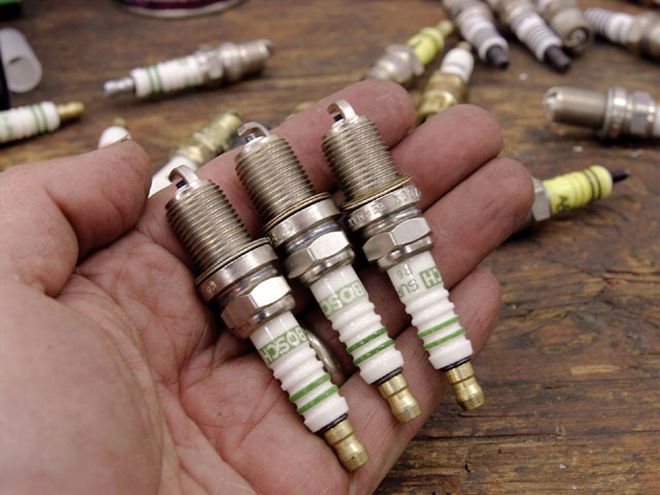 The spark-plug companies don't make heat ranges easy to remember. Companies like AC, ACCEL, Autolite, Bosch, and Champion use lower numbers for colder plugs, while NGK and Denso use higher numbers for colder heat ranges.
The spark-plug companies don't make heat ranges easy to remember. Companies like AC, ACCEL, Autolite, Bosch, and Champion use lower numbers for colder plugs, while NGK and Denso use higher numbers for colder heat ranges.
As you might have guessed, a strong street engine might actually need two different sets of plugs, depending on how the engine is being used. Those hot plugs for around-town cruising might well need to be one or perhaps two steps colder for those high-rpm, Saturday-night blasts at the strip if you're using nitrous or cranking up the boost on a supercharger.
How To Read Spark Plugs
Here is where the science of spark plugs diverges into more of an art form. We will begin to outline all the details of spark-plug reading, and even though there is much left to interpretation, there are a few simple techniques that can help you get closer to understanding what your plugs are telling you.
With unleaded gasoline, and especially the new ethanol-blended fuels like E85, the signs present on spark plugs will take some close scrutiny. Begin by finding a good spark-plug viewer. ZEX and others sell these inexpensive tools. The most expensive ones we've seen are medical-grade tools that let you see right down into the bottom of the plug porcelain, but they cost $150. It's also best to tune with new plugs that have perhaps two or three passes on them to help you read the results.
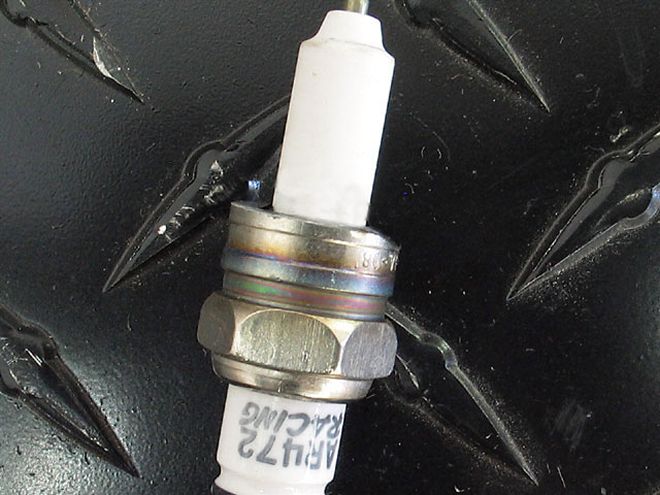 Learning to read spark plugs can start with looking at the three tiers of engine operation as indicated on the plugs' porcelain insulators.
Learning to read spark plugs can start with looking at the three tiers of engine operation as indicated on the plugs' porcelain insulators.
Think of spark plugs as windows into the combustion process. The end of the porcelain closest to the center electrode is used to read the idle mixture. The center portion of the porcelain will indicate part-throttle air/fuel (A/F) mixtures, while the bottom of the porcelain will indicate the wide-open-throttle (WOT) air/fuel ratio. Obviously, a black, sooty plug is way rich and a bone-white porcelain is probably way lean. The best way to judge WOT mixtures is to run the engine at WOT and then cut the ignition clean at the end of the track and safely shift into Neutral. Coast to a safe stop on the return road, pull a spark plug out, and use the viewer to closely inspect the plug.
Unleaded fuels do not color plugs as clearly as leaded fuels, so you have to look closely for the A/F ratio ring at the bottom of the center porcelain. The big things to look for are tiny flecks of aluminum that have transferred to the ceramic from the piston or perhaps the combustion chamber during an oh-too-lean condition that has caused aluminum to melt.
Ignition timing plays a huge part in terms of spark-plug temperature. The best place to read this is on the spark plug's ground strap. The tip of the ground strap will tend to color first, and then, as temperature increases, this coloring (called annealing) will travel down the length of the strap toward the shell. An ideal ignition-timing temperature range for a given spark plug will create a light blue ring around the strap about halfway down its length. If the ground strap shows no coloration, the engine could respond to more timing. If the ground electrode begins to color in blues and greens or the tip begins to melt, the timing is over-advanced. Of course, if you are tuning at the dragstrip, these conditions will have raised red flags in terms of lost e.t. or trap speed as well.
The Demands of Superchargers, Turbos, and Nitrous
Power-adders do a fantastic job of increasing cylinder pressure and heat. This also places much greater demands on the spark plugs. Nitrous is perhaps the most abusive because of its reputation for extremely fast cylinder-pressure rise time. Some rules of thumb include running a colder heat range and using nonprojected-nose plugs. The general consensus among power-adder tuners is that it's best not to use platinum plugs, since this material acts as a kind of heat sink that will cause pre-ignition problems. Other tips include running a tighter gap, since high cylinder pressures place much greater demands on the ignition system. The best plug gaps are the largest ones that will survive; start with 0.030 inch.
For nitrous, a safe recommendation is one step colder for every 75 to 100hp increase in power. So, for a 300hp engine adding 200hp of nitrous, this would mean using plugs that are two steps colder. This is also a good starting point for similar power increases either normally aspirated or with a supercharger or turbo.
Specialty Plugs
This is the age of designer spark plugs. SplitFire rode the first wave of specialty plugs with its V'd ground strap, and now it seems that every spark-plug manufacturer has its own version of what's hot. While the debate will continue to rage over whether diamond-shaped or split-V ground straps are worth more power/mileage/emissions, we do know that plugs using more exotic metals enhance durability. Platinum arrived a few years ago, with Bosch leading the charge with three different versions of its platinum-tipped spark plugs. Then NGK upped the ante with its Iridium IX series of plugs. The plan with virtually all these designs revolves around reducing tip or ground-strap erosion that increases the gap between the center electrode and the ground strap. Some plugs, like the Bosch Platinum +4, use four ground straps to also minimize the overall gap to ground.
The price on these plugs is also significantly higher than for normal copper-core spark plugs, and generally, the heat ranges tend to be limited. These specialty plugs are not intended as race plugs. Instead, they are aimed more at everyday drivers and may offer slight mileage or emissions improvements.